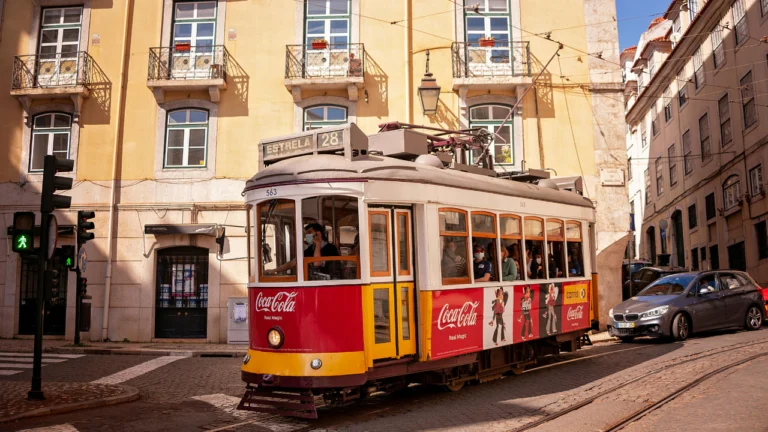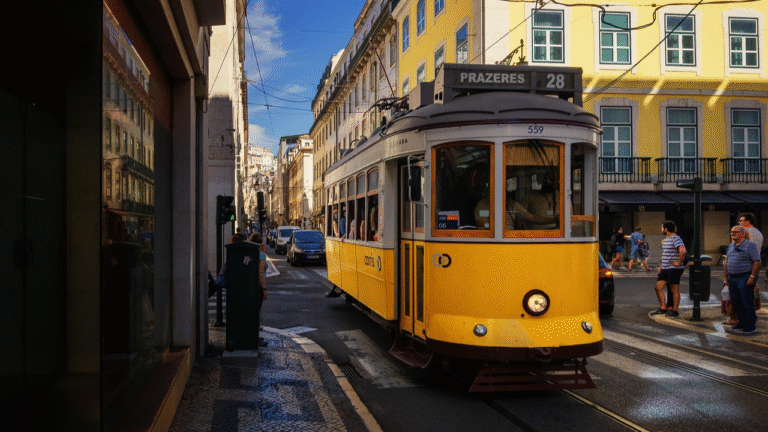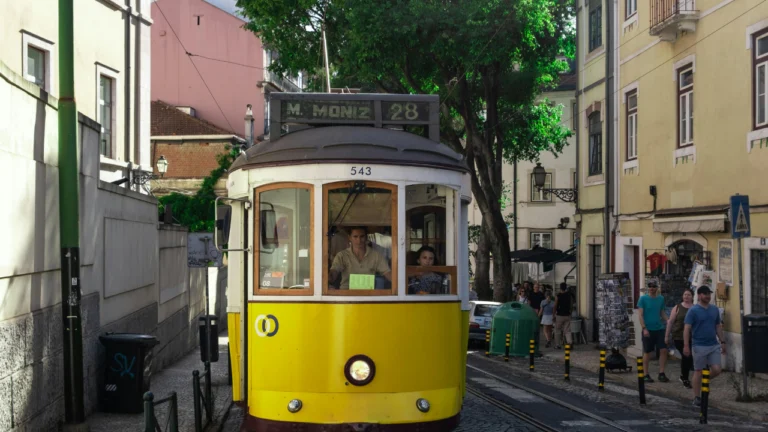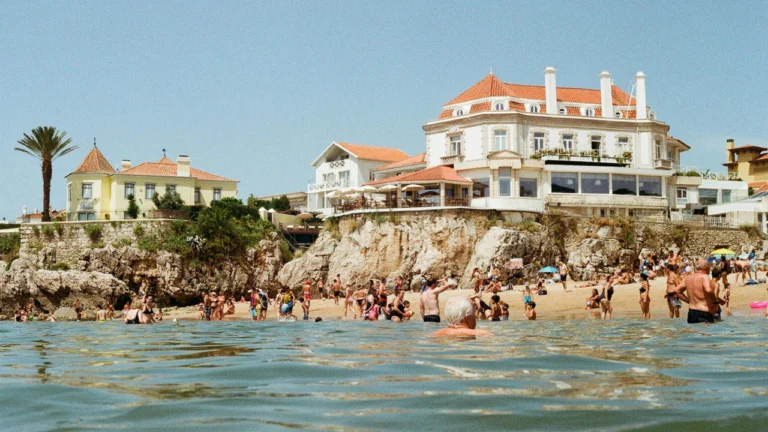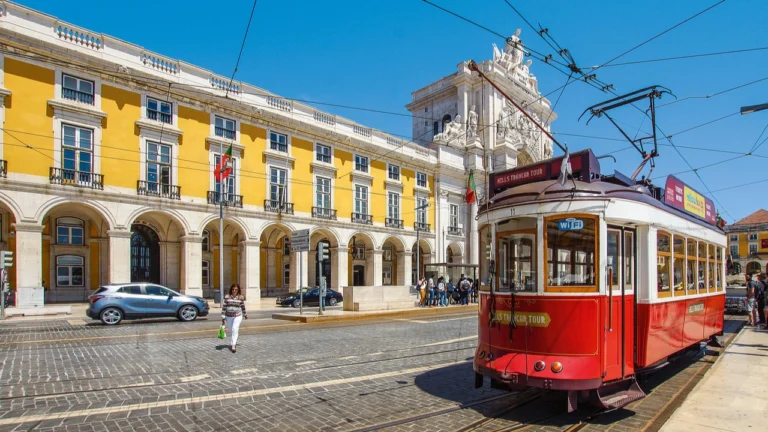Lisbon Tram Accessibility Made Simple
Last updated on October 7, 2025 at 15:09:36
Key Takeaways About lisbon tram accessibility
- Tram 28 isn’t your only option – locals use alternatives that are easier to board
- Early mornings (before 9am) transform the tram experience completely
- The Viva Viagem card saves you money and hassle – one card for everything
- Standing room often provides better views than cramped seats
- Alternative transport options can be more practical for families
Right, let’s have an honest chat about those famous yellow trams. Last Tuesday, I watched a queue of tourists stretching halfway down Martim Moniz, all waiting for Tram 28. Meanwhile, my neighbour António just hopped on the practically empty 12E tram heading the same direction. That’s the difference between tourist Lisbon and real Lisbon – and I’m here to bridge that gap for you.
Why Lisbon’s Trams Matter (But Not Always in the Way You Think)
When I first visited Lisbon back in 2017, I’ll admit it – I queued for an hour for that Instagram shot hanging off Tram 28. These days, living between Brighton and Alfama with my family, I’ve learned the trams are brilliant, but they’re not always the most practical option. Here’s what seven years of tram adventures have taught me.
The historic trams (called eléctricos by locals) aren’t just tourist attractions. They’re working transport that thousands of Lisboetas rely on daily. Understanding this changes everything about how you’ll use them. My daughter Lena loves counting the tiles we pass on the Number 12, whilst little Theo prefers the modern trams because, in his words, “they don’t make my bum hurt.”
The Reality Check: Accessibility Challenges You Need to Know
Let me be frank – those charming vintage trams from the 1930s weren’t designed for modern comfort. The steps are steep (genuinely steep – I’ve seen grown adults struggle), the aisles are narrow, and when they’re packed, it’s properly sardine-tin territory.
Physical Limitations to Consider:
| Challenge | Reality | Solution |
|---|---|---|
| Steep steps | 3 high steps to board | Use modern trams (15E, 18E) |
| Narrow aisles | Barely fit one person | Travel off-peak hours |
| No wheelchair access | Vintage trams only | Metro or bus alternatives |
| Limited seating | 20 seats maximum | Board at terminus stops |
My Portuguese teacher, Maria, who’s lived here for sixty years, told me something brilliant: “The trams are like Lisbon itself – beautiful but demanding. You must respect their rhythm.” She’s absolutely right.
Your Step-by-Step Guide to Mastering the Trams
Step 1: Get Your Viva Viagem Card
Pop into any metro station (not the tourist office – avoid those queues). Load it with €15 to start. The card costs 50 cents and lasts forever. One tap when you board, and you’re sorted for 60 minutes on any public transport.
Step 2: Choose Your Tram Wisely
Forget what the guidebooks say about Tram 28 being essential. The 12E covers similar ground with half the crowds. The 15E to Belém? Modern, air-conditioned, and actually has space for pushchairs.
Step 3: Time It Right
Before 9am or after 7pm – that’s your golden window. I take the kids on evening tram rides when the light’s gorgeous and the tourists are having dinner. Pure magic, and Theo can actually sit down.
Step 4: Board Like a Local
Wait for people to exit (seems obvious, but you’d be surprised). Have your card ready. Move straight to the middle – don’t hover by the door. And here’s a secret: drivers appreciate a “bom dia” or “boa tarde” when you board.
Alternative Routes for Better Lisbon Tram Accessibility
Sometimes, the tram isn’t the answer. Last week, trying to get from Baixa to Príncipe Real with shopping bags and tired children, we took the Elevador da Glória instead. Five minutes, no queues, same lovely views.
The metro reaches everywhere important and has lifts at major stations. The buses? Brilliant for Belém (the 714 is my favourite). And those tuk-tuks everyone mocks? Honestly, after a long lunch with wine, sometimes they’re perfect.

Making Trams Work for Families with Lisbon Tram Accessibility
With Lena and Theo in tow, I’ve learned tricks. We make games of it – counting yellow buildings, spotting azulejo patterns, waving at dogs in windows. Pack light (seriously, light). And always, always have snacks. A packet of Maria biscuits has saved many tram journeys.
The modern 15E tram has become our family favourite for Belém runs. Space for bags, smooth ride, and it stops right by the pastéis de nata at Pastéis de Belém. Speaking of which, those custard tarts taste even better after successfully navigating public transport with kids – it’s our reward system!
Your Lisbon Tram Adventure Starts Here
The trams are part of Lisbon’s soul, but they’re not the only way to experience this magnificent city. Use them wisely, respect their quirks, and remember – sometimes the best moments happen when you hop off and wander those hills on foot instead.
Tomorrow, I’m taking the 24E up to Campolide with the family – there’s a little tasca there that does the most incredible bifanas. The tram journey’s part of the adventure, but it’s the destination that makes the memory.
Now I’d love to hear from you – what’s your favourite family food discovery when travelling? Have you found a hidden restaurant at the end of a tram line, or stumbled upon a perfect picnic spot? Share your stories below. We’re all learning this beautiful city together, one tram ride (and one meal) at a time.
FAQs Lisbon tram accessibility
Are trams in Lisbon accessible?
Some are, but many historic trams like Tram 28 are not fully accessible. Modern trams are easier to board.
How to get around Lisbon with mobility issues?
Stick to accessible trams, buses, and the Metro. Plan routes in advance and use taxis or rideshares for tricky streets.
Is the Lisbon Metro accessible?
Yes, most stations have elevators and ramps, making it the easiest public transport option for mobility needs.


